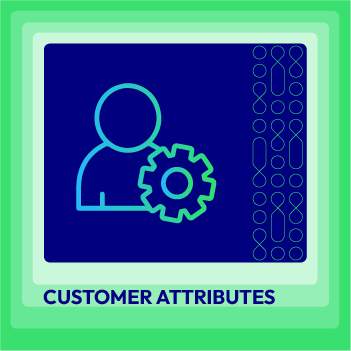How to Get Customer Groups in Magento 2
Vinh Jacker | 03-17-2025

If you are running a Magento 2 store with a large number of products and a huge customer base, it’s essential to categorize customers into groups. Customer groups help you manage customers better . You can understand and serve them better with more relevant and personalized offers.
Magento supports three default customer groups:
- General
- Not Logged in
- Wholesale
However, it’s also easy and quick to create extra customer groups in Magento 2. It usually depends on the demands of each store owner.
In this post, I will bring you the simplest way to get customer groups in Magento 2 smoothly. To do that, please copy the following code and add it to your block class.
Why Do You Need to Create Customer Groups in Magento 2?
In Magento 2, customer groups play a key role in dividing customers into different segments. This helps online businesses customize their strategies and services for various customer groups, leading to a more personalized and efficient shopping experience. Let’s discover the detailed benefits!
Pricing Strategies
Dynamic Pricing: Creating different customer groups means you can set different product prices for each group. This is especially important for cases like below:
- Wholesale Pricing: Offer incentives to your wholesale clients, naturally motivate bulk purchases and enhance strong B2B relationships.
- Loyalty Discounts: Reward dedicated members with exclusive discounts, showing appreciation to them and encourage repeat purchases.
Targeted Promotions
Customer groups empower you to craft deals and special offers exclusively for particular customer segments. This focused marketing approach can:
- Drive Sales: Launch promotions customized to specific customer groups, increasing the chances of sales within those segments.
- Clear Stock: Utilize promotions to move slow-selling inventory among targeted customer segments.
Personalized Shopping Journey
Individualized Touch: Delivering a special shopping experience to diverse customer groups is vital for customer happiness. Magento 2’s customer groups can facilitate:
- Tailored Product Suggestions: Recommend items based on a customer’s past purchases or preferences.
- Customized Content: Personalize banners, messages, and other content shown to specific customer groups.
Restricted Access
Exclusive Offerings: Applying customer groups, you can restrict access to particular products or categories for specific customer segments. This functionality is especially handy for creating:
- Premium Product Sections: Provide exclusive access to premium or VIP products, stimulating interest and purchases within that group.
- Subscription-Based Services: Control access to subscription services or content.
Get customer groups in Magento 2
/**
* Customer Group
*
* @var \Magento\Customer\Model\ResourceModel\Group\Collection
*/
protected $_customerGroup;
/**
* @param \Magento\Backend\Block\Template\Context $context
* @param \Magento\Customer\Model\ResourceModel\Group\Collection $customerGroup
* @param array $data
*/
public function __construct(
\Magento\Backend\Block\Template\Context $context,
\Magento\Customer\Model\ResourceModel\Group\Collection $customerGroup,
array $data = []
) {
$this->_customerGroup = $customerGroup;
parent::__construct($context, $data);
}
/**
* Get customer groups
*
* @return array
*/
public function getCustomerGroups() {
$customerGroups = $this->_customerGroup->toOptionArray();
array_unshift($customerGroups, array('value'=>'', 'label'=>'Any'));
return $customerGroups;
}
Wrap up
That is everything you will use to retrieve the customer groups in Magento 2. Thanks for your reading and please comment below if there is any trouble while following this tutorial.







![Top 20+ Must-have Shopify Apps for 2025 [Free & Paid] - Mageplaza](https://cdn2.mageplaza.com/media/blog/must-have-shopify-apps/top-must-have-shopify-apps.png)
![[2025 Updates] Top 10+ Upsell Apps for Shopify - Mageplaza](https://cdn2.mageplaza.com/media/blog/best-upsell-shopify-app/cover.png)